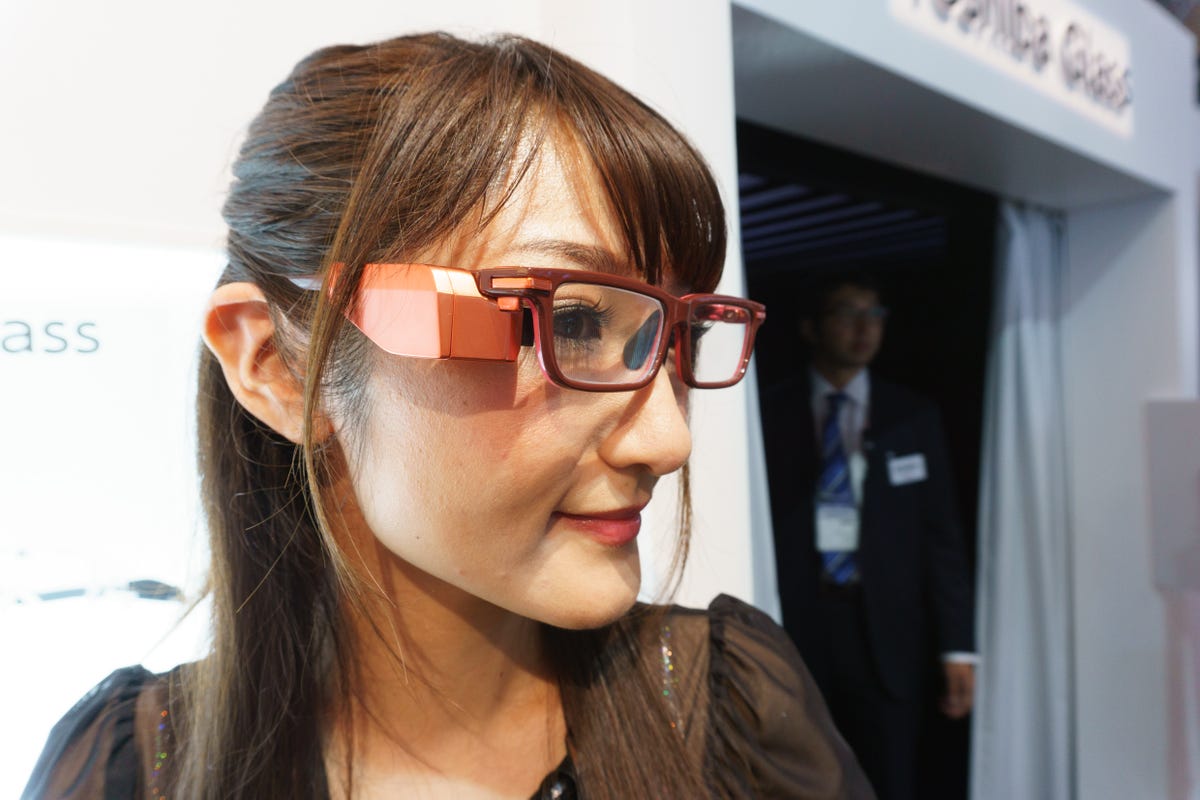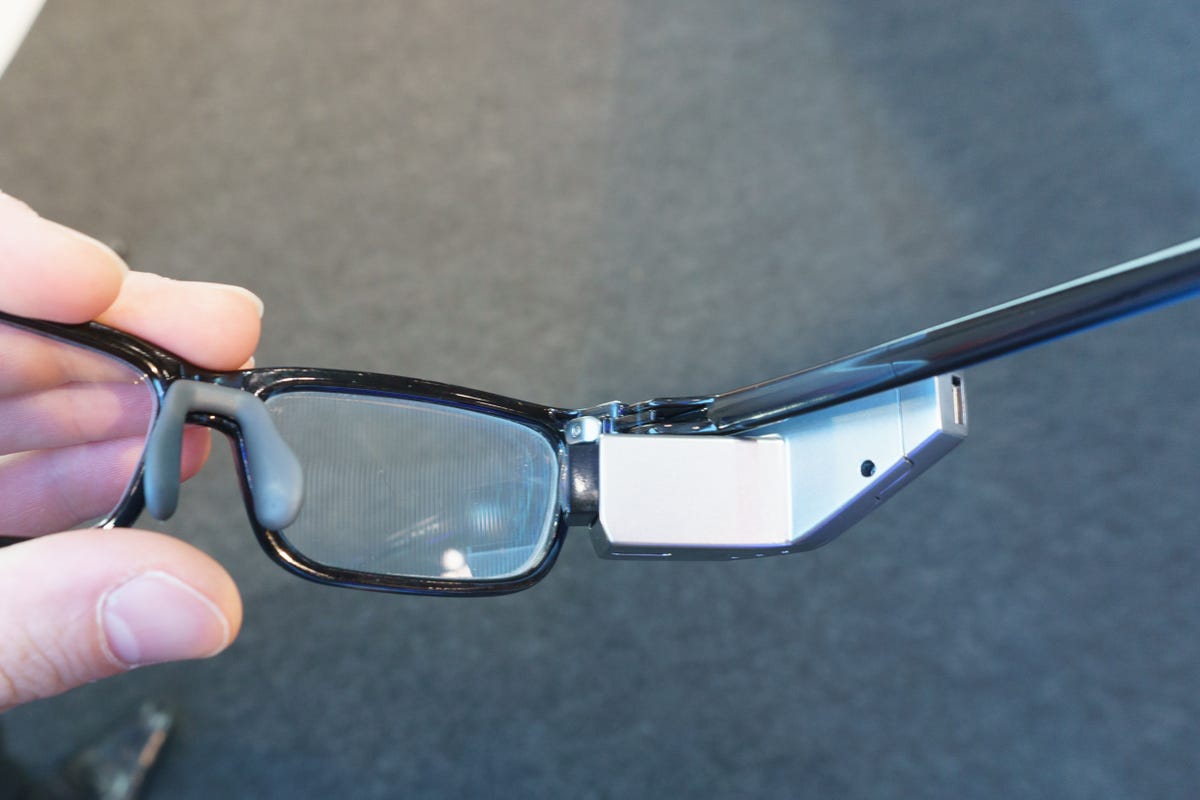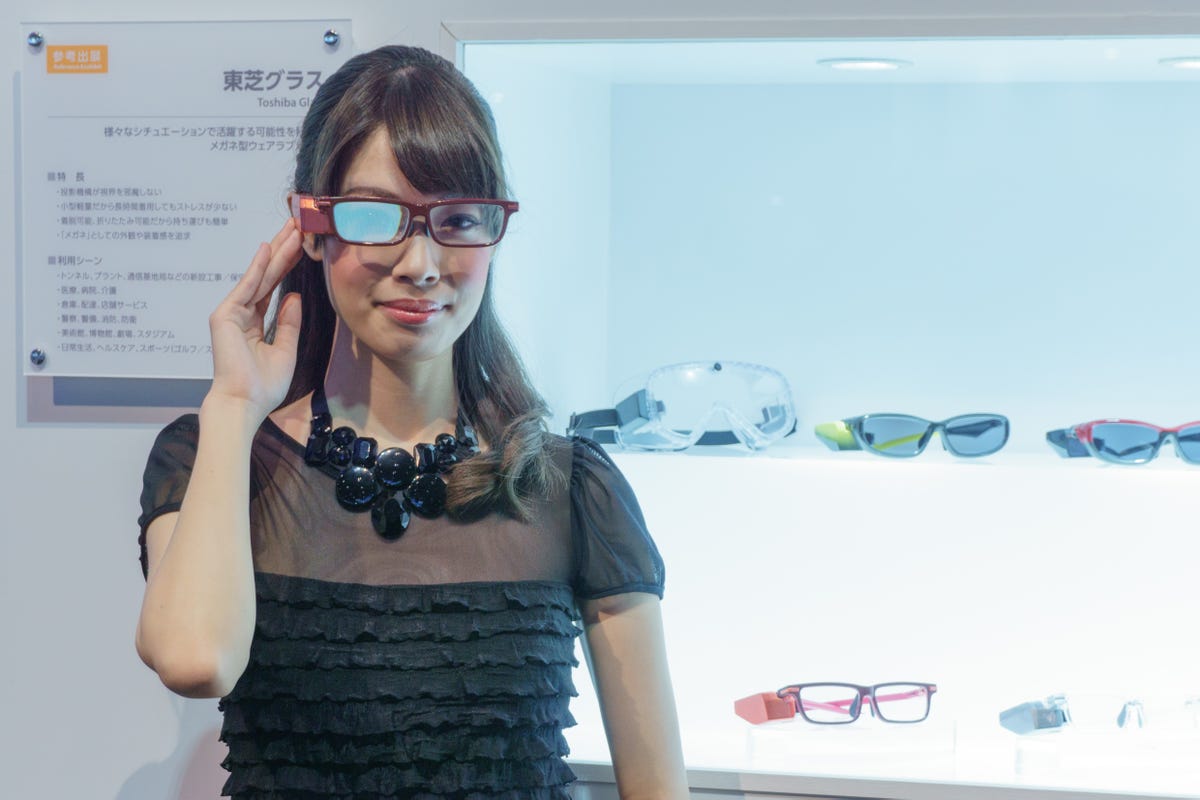
Tim Stevens/CNET
TOKYO — Google Glass has a lot of things going for it, but then it has a lot of things going against it, too. Among those is a design that, while not exactly bulky, is quite obtrusive. It’s difficult to have a conversation with someone wearing Glass because there’s this big thing hanging in front of their eye. You just can’t ignore it, even if you’re not wearing it.
The design of Glass necessitates this, as the projector reflects through a cube of plastic positioned external to the glasses. Toshiba has come up with a more subtle solution (though a similar name) for its Toshiba Glass, on display here in Tokyo at Ceatec 2014.
The concept is the same, a display that resides in the right earpiece and shines light in from the side, ultimately reflecting into your eye. However, here the reflectors are integrated within the lens of the right eyepiece. This means there’s no plastic cube hanging in front of your face. In fact, with the display off, it’s just like wearing any normal pair of glasses. You have to hold them at an angle to see the subtle cuts in the glass that reflect the projection.


Tim Stevens/CNET
Put on a working pair, however, and you see an image hovering in the air, just like with Google’s wearable. The image in the prototype pair we tried did appear to be just a touch less sharp than what Google Glass can manage, and with demonstrations only happening in a darkened room we have some concerns that perhaps brightness in outdoor situations might be a challenge. But it’s still impressive to get a similar level of image quality without an external reflector.
Toshiba had a few demonstrations for us, including displaying speed when riding a bicycle, giving a real-time translation of a presenter at a meeting and pop-up instant messaging. All were non-functional at this point, merely showing concepts for what its Glass could do.


Tim Stevens/CNET
Toshiba Glass does have fewer features than Google Glass, most apparent being the lack of a camera. More significantly, Toshiba Glass must remain physically tethered to a smartphone to work, as it lacks a battery or processing power of its own. Having a cable running to a phone in your pocket is certainly a drawback, but given the battery life problems with Glass that may be a trade-off worth making.
That simpler design means that Toshiba Glass should be cheaper to produce than Google Glass, which currently retails for $1,500 in the US and £1,000 in the UK (which converts to AU$1,800). That said, a Toshiba representative was quick to point out that its version of Glass is not for sale, not now and perhaps not ever. It’s instead part of a “solution,” a full package of software and services intended for enterprises. In other words: it’s not for you, Mr. Consumer, despite Toshiba showing it off in dozens of fashionable frames (and even safety goggles). Shame — we kind of liked the crimson ones.



